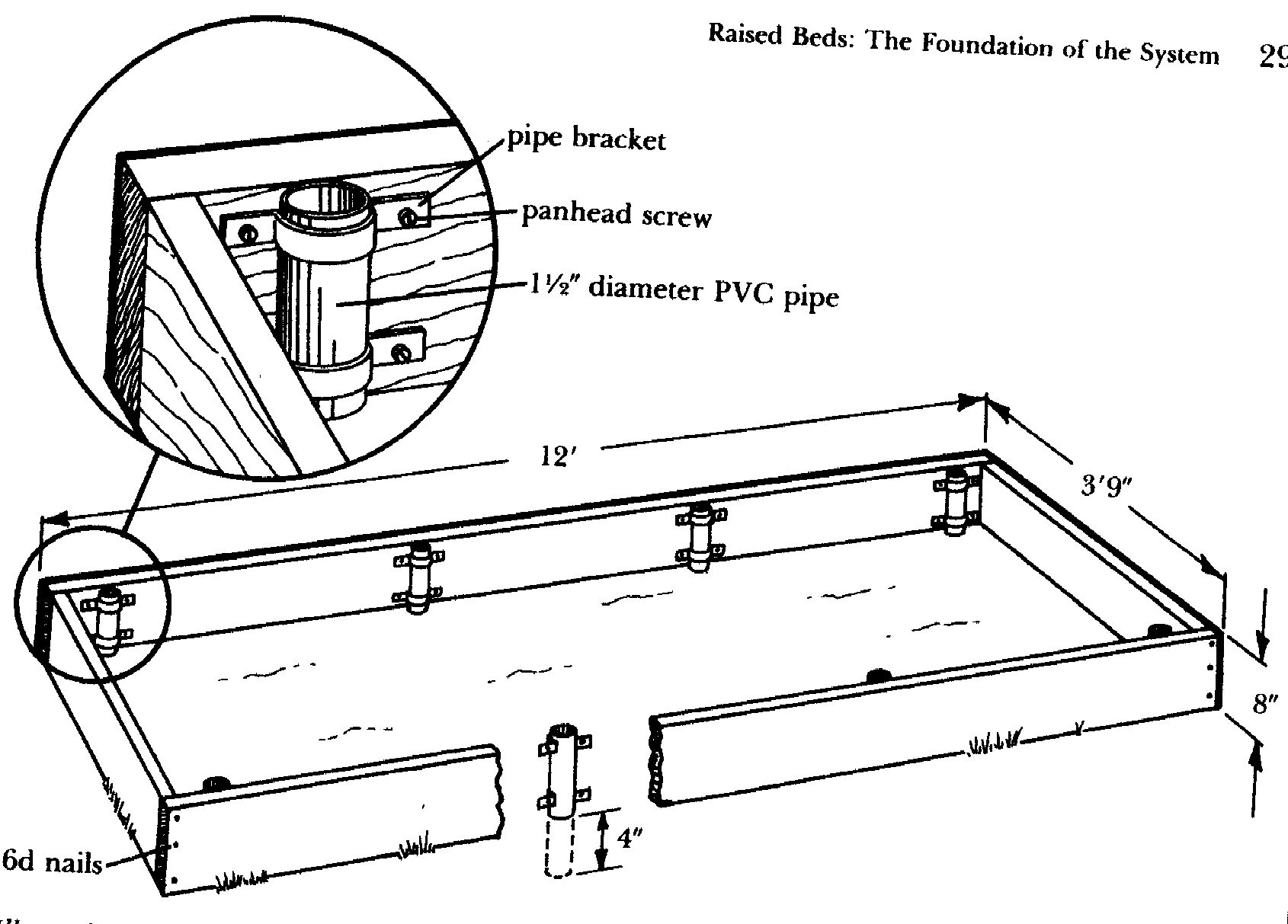Why Raised Beds?
The French used raised beds in their market gardens around Paris 200 years ago because they work. Raised beds are the best way to build a vegetable garden because:
1. They are neater, easier to work with, and you don't have to bend over so far to work in the garden.
2. You do not waste fertilizer, water, organic mulch, and time working on the paths; the paths are permanent.
3. Soil in a raised bed warms up sooner in the spring. After the first year you no longer need to roto-till the garden if you have raised beds.
4. You can plant them more intensively giving you higher productivity per square foot of garden.
Making Your Own Raised Beds
Prepare The Soil - To make a raised bed garden from scratch, you will likely need to roto-till the entire garden area to loosen what is probably fairly compacted soil. Any tool rental agency will have tillers to rent.
Important Note
When you are roto tilling the garden area, that is the very best time to add some very important organic matter to the soil. Whole leaves, straw, compost, finely shredded bark, Canadian sphagnum peat moss or even shredded newspapder are all good candidates. It is hard to put too much organic matter in the garden's soil. An inch of leaves or straw, a half inch of peat moss or compost gives you a good start.
Lay Out The Garden Beds and Permanent Paths
With stakes and string you lay out the beds and paths. The beds should be 3 to 4 feet wide. You should be able to reach the middle of the bed comfortably. If possible the beds should be oriented on a north - south axis.
Wide Paths - If possible make at least some of your permanent paths a little wider than your garden cart, allowing you to get anywhere in the garden with a cart.
Dig Soil Out Of Paths
Now you simlply dig all the top soil out of the paths and place it on the beds; usually down eight or ten inches. Then lay 3 or 4 inches of wood chips over all the paths and then even out the surface of the beds with a rake. Viola! You have a raised bed garden.
To Box Or Not To Box???
NEWS ALERT!!!
Pressure treated lumber is now safe for vegetable gardens. The arsenic that was previously in pressure treated lumber has been banned and that old fashioned version is no longer available. Use the new pressure treated lumber with safety!!
You can have a productive raised bed garden without boxing in the beds with planks. You have to dress the sides of each bed every spring which is a little extra work. We suggest that if you can afford the lumber, boxing your raised beds has many benefits and here is how you do it.
Boxed Raised Bed With PVC Foundations
This bed, illustrated below, is 4 feet by 12 feet. It is made from ten inch pressure treated planks that are sunk 4 inches in the soil leaving six inches of boxing in the soil. The soil inside the box for growing plants comes up to 2 inches below the top of the plank, or however high you want to make it. The box is secured with spikes.
PVC Foundations
What is unique about this system are the 1 1/2 inch diameter PVC pipes attached to the inside of the box. If you are going to install these foundations, you do it before you construct the bed itself. These foundations are 12 inches long with the top of the PVC pipe even with the top edge of the plank. These permanent foundations are designed to support a large trellis or a plastic tunnel, or both. You see that you will have to dig holes to accomodate the bottom of the PVC foundations that you have attached to the planks.


